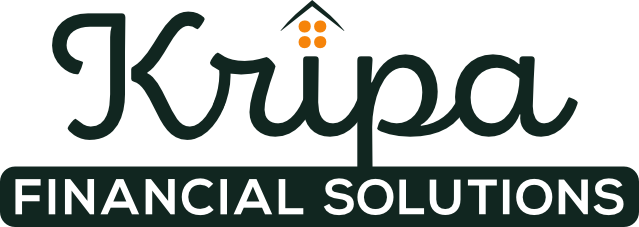Decoding Debt-to-Income Ratios: A Guide to Navigating New Zealand's Housing Market
Demystifying Debt to Income Ratios - key to understanding the housing market.
If you're looking to get into the New Zealand housing market, understanding debt-to-income ratios is crucial. These ratios play a significant role in determining your eligibility for a mortgage and ultimately, the affordability of a home. In this comprehensive guide, we will break down the complexities of debt-to-income ratios and provide you with the knowledge you need to navigate the housing market with confidence.
With skyrocketing house prices and stricter lending criteria, it's more important than ever to comprehend the impact of debt-to-income ratios on your borrowing capacity. We will explain what exactly debt-to-income ratios are, how they are calculated, and why lenders consider them so crucial. Moreover, we'll delve into the specific requirements set by New Zealand's lenders and provide valuable tips on how to lower your debt-to-income ratio to improve your chances of securing a mortgage.
Whether you're a first-time homebuyer or a seasoned investor, this guide will equip you with the knowledge to make informed decisions when entering New Zealand's housing market. Don't let debt-to-income ratios hold you back - gain a competitive edge and achieve your housing goals.
Understanding debt-to-income ratios
Debt-to-income ratios, often referred to as DTI ratios, are a key metric used by lenders to assess a borrower's ability to repay a loan. It compares an individual's total debt to their income and is expressed as a percentage. In New Zealand, lenders typically look at two types of debt-to-income ratios: the front-end ratio and the back-end ratio.
The front-end ratio calculates the percentage of a borrower's income that goes towards housing expenses, including mortgage payments, property taxes, and insurance. On the other hand, the back-end ratio considers all of the borrower's monthly debt obligations, including credit card payments, car loans, student loans, and any other outstanding debt. Lenders in New Zealand usually have specific limits for both ratios, and borrowers must meet these requirements to be eligible for a mortgage.
It's important to note that debt-to-income ratios are not the only factor lenders consider when assessing a loan application. They also take into account credit history, employment stability, and other financial factors. However, maintaining a healthy debt-to-income ratio significantly increases your chances of securing a mortgage.
In the realm of personal finance and lending, the Debt-to-Income (DTI) ratio plays a pivotal role in assessing an individual's financial health and capacity to take on additional debt. This comprehensive guide will walk you through the ins and outs of DTI, its significance, and its impact on financial decisions.
What is Debt-to-Income Ratio (DTI)?
DTI is a financial metric that compares an individual's total monthly debt payments to their gross monthly income. It's a crucial tool used by lenders to evaluate an individual's ability to manage monthly debt obligations in relation to their income.
Why is DTI important?
Lenders use DTI to gauge an applicant's financial stability before extending credit, such as mortgages, car loans, or personal loans. It helps determine whether an individual can comfortably afford additional debt payments based on their existing financial commitments.
Types of DTI:
-
Front-end DTIList Item 1
This focuses solely on housing-related expenses, including mortgage or rent payments, property taxes, and homeowner's insurance, divided by gross monthly income.
-
Back-end DTIList Item 2
It considers all debt obligations, including housing expenses, credit card payments, student loans, and other debts, divided by gross monthly income.
What's a good DTI?
Lenders typically have varying thresholds for acceptable DTI ratios. As a general rule of thumb, a lower DTI signifies a healthier financial situation. A DTI below 36-43% is often preferred by lenders, indicating that a significant portion of income isn't allocated to debt payments.
Why debt-to-income ratios matter in New Zealand's housing market
In recent years, New Zealand's housing market has become increasingly competitive and expensive. As a result, lenders have become more cautious, and debt-to-income ratios have gained even more significance. Higher debt-to-income ratios indicate a higher level of financial risk for lenders, as borrowers with a large amount of debt compared to their income may struggle to meet their monthly mortgage payments. By setting limits on debt-to-income ratios, lenders aim to mitigate this risk and ensure borrowers can comfortably afford their mortgage payments.
Additionally, the Reserve Bank of New Zealand has introduced regulations to further control lending practices and protect the stability of the housing market. These regulations include loan-to-value ratio (LVR) restrictions and debt serviceability assessments, both of which consider debt-to-income ratios. Therefore, understanding and managing your debt-to-income ratio is crucial when navigating New Zealand's housing market.
How debt-to-income ratios are calculated
To calculate your debt-to-income ratio, you need to determine your total monthly debt payments and divide it by your gross monthly income. Let's say your monthly debt payments amount to $1,500, and your gross monthly income is $5,000. Your debt-to-income ratio would be 30%, calculated as $1,500/$5,000 x 100.
It's important to note that different lenders may have slightly different calculations and include or exclude certain types of debt. Therefore, it's crucial to check with your specific lender to understand their specific requirements and calculations.
The importance of a low debt-to-income ratio
Having a low debt-to-income ratio can have several advantages when it comes to securing a mortgage.
- Firstly, it demonstrates to lenders that you have a healthy financial position and are capable of managing your debt responsibly. This increases your chances of being approved for a mortgage and potentially obtaining more favorable loan terms, such as lower interest rates.
- Secondly, a low debt-to-income ratio allows you to have more disposable income, which can be allocated towards savings, investments, or other financial goals. It provides you with financial flexibility and reduces the risk of being financially stretched if unexpected expenses arise.
- Furthermore, a low debt-to-income ratio can provide a sense of financial security and peace of mind. By keeping your debt obligations manageable in relation to your income, you can ensure a more stable financial future and reduce the risk of falling into financial hardship.
How debt-to-income ratios affect loan applications
Debt-to-income ratios play a significant role in the loan application process. Lenders carefully evaluate these ratios to determine your ability to make consistent mortgage payments without experiencing financial strain. A high debt-to-income ratio indicates a higher level of risk for lenders, as it suggests that a significant portion of your income is already allocated towards debt repayments.
When applying for a mortgage, lenders will request documents and information to verify your income and existing debt obligations. This includes pay stubs, bank statements, tax returns, and details of any outstanding loans or credit card balances. By assessing these documents, lenders can calculate your debt-to-income ratio and make an informed decision regarding your loan application.
If your debt-to-income ratio is too high, it may result in a mortgage application being declined or a lower loan amount being offered. On the other hand, a low debt-to-income ratio increases your chances of being approved for a mortgage and obtaining more favorable loan terms.
Strategies for improving your debt-to-income ratio
Improving your debt-to-income ratio is crucial if you're looking to secure a mortgage in New Zealand. Here are some strategies that can help you lower your ratio and increase your chances of loan approval:
Common mistakes to avoid when managing debt-to-income ratios
When it comes to managing debt-to-income ratios, there are several common mistakes that borrowers should avoid. These mistakes can negatively impact your ability to secure a mortgage and hinder your financial goals. Here are some pitfalls to watch out for:
List of Services
-
Ignoring debt obligations:List Item 1
Failing to acknowledge and address your existing debt obligations can quickly lead to a high debt-to-income ratio. Ignoring debts can result in missed payments, late fees, and potential damage to your credit score. It's crucial to stay on top of your debt payments and address any financial challenges proactively.
-
Overestimating your borrowing capacity:List Item 2
It's important to be realistic about your borrowing capacity and not take on more debt than you can comfortably manage. While it may be tempting to borrow to the maximum limit, it's crucial to consider your overall financial health and ensure that you can comfortably afford your mortgage repayments.
-
Relying solely on debt consolidation:List Item 3
Debt consolidation can be an effective strategy for managing multiple debts, but it's not a one-size-fits-all solution. Consolidating your debts into a single loan may temporarily lower your debt-to-income ratio, but it's crucial to address the underlying financial behaviors and manage your debt responsibly.
-
Not seeking professional advice:List Item 4
Managing debt-to-income ratios can be complex, and it's easy to make mistakes without proper guidance. Seeking advice from a financial advisor or mortgage broker can provide valuable insights and help you navigate the process more effectively.
Conclusion:
Understanding debt-to-income ratios is crucial when entering New Zealand's housing market. These ratios play a significant role in determining your eligibility for a mortgage and the affordability of a home. By comprehending how debt-to-income ratios are calculated, why they matter, and strategies for improving them, you can gain a competitive edge and increase your chances of securing a mortgage. Don't let debt-to-income ratios hold you back – use this guide to navigate the complexities of New Zealand's housing market and achieve your housing goals with confidence.





